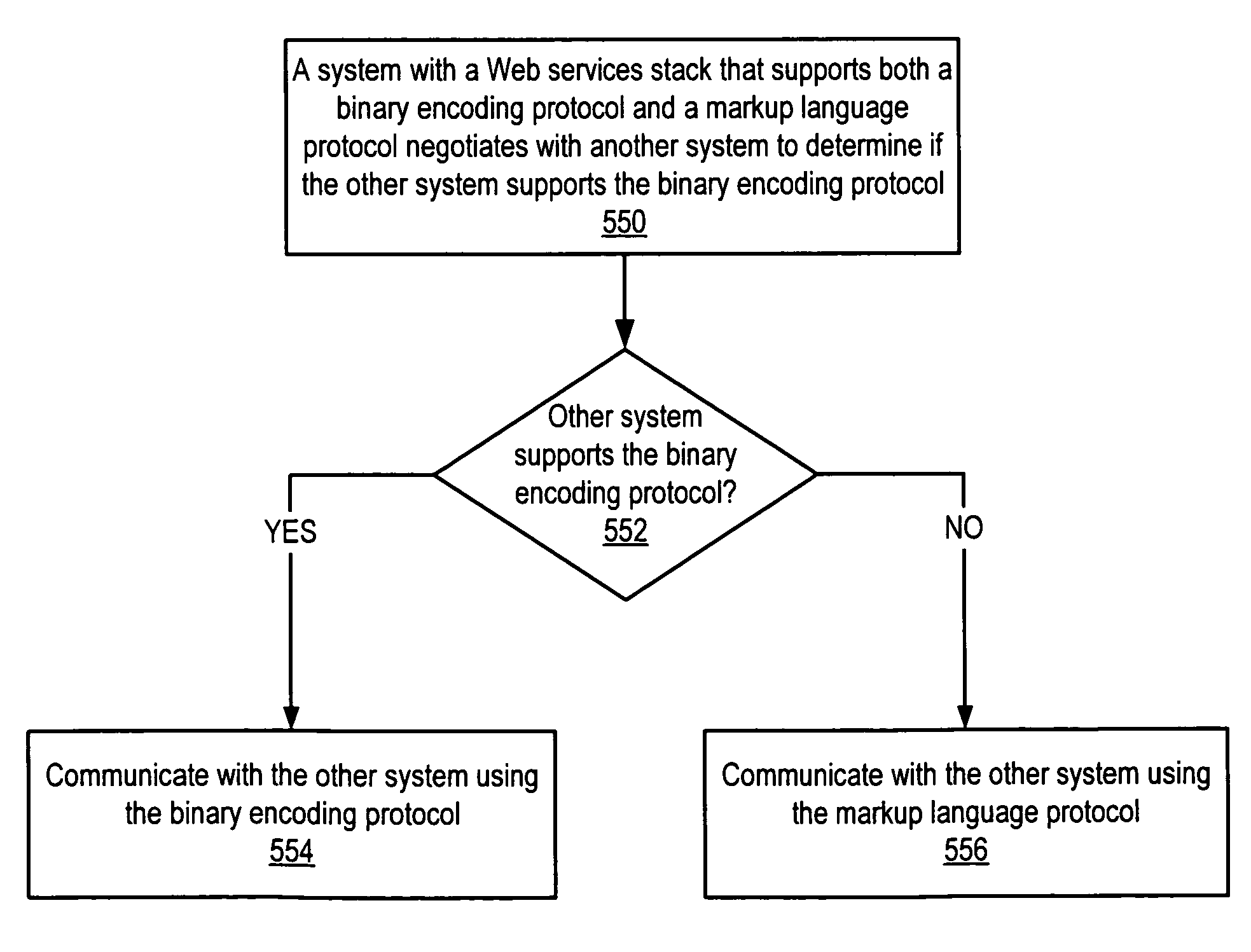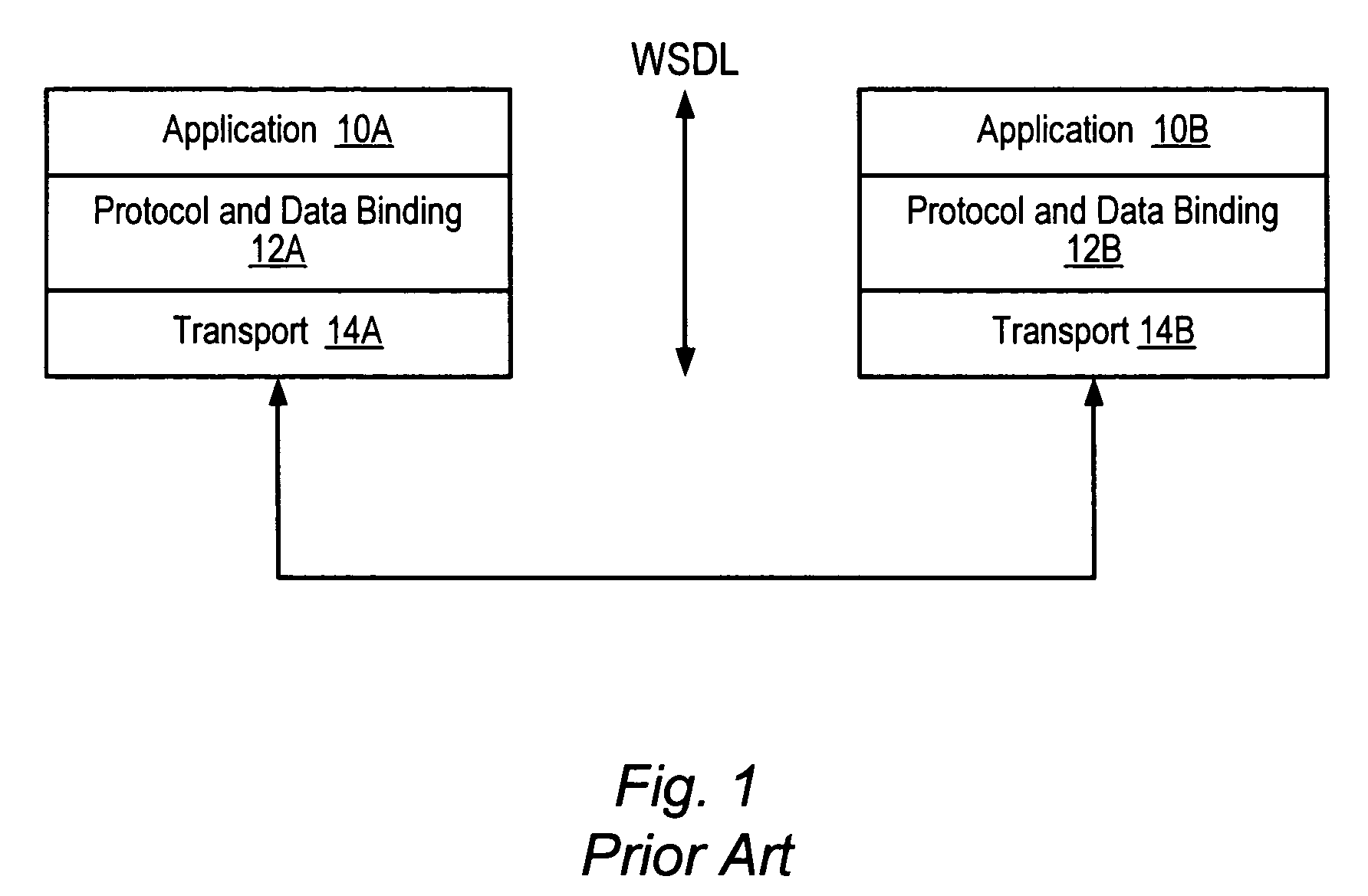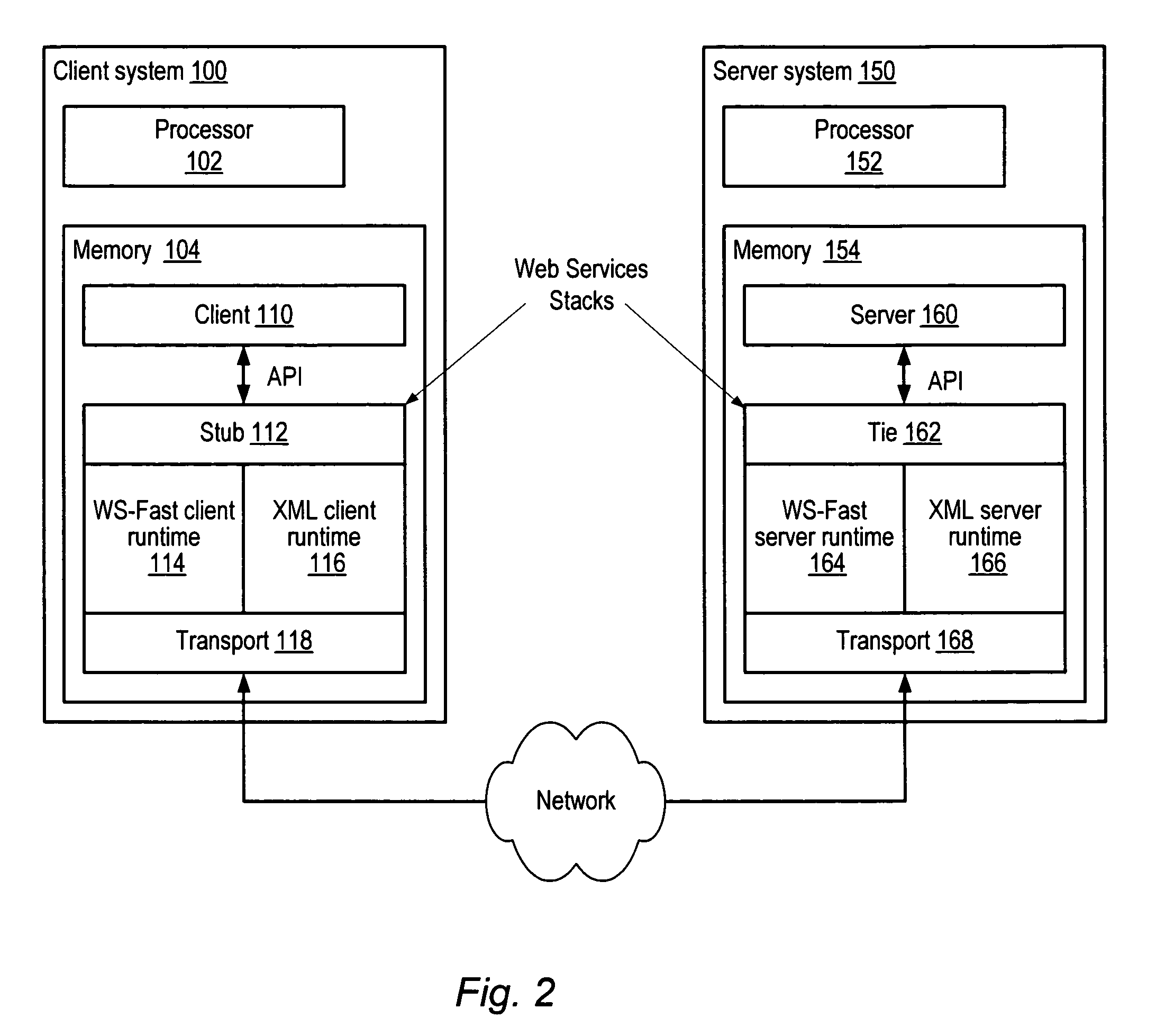Dynamic web services stack
a web service and dynamic technology, applied in the field of computer software, can solve the problems of inefficient data representation, high cost of bandwidth and performance, and the need for binding more computation, so as to minimize the developer impact, fast and efficient end-to-end web services, and minimize the developer impact
- Summary
- Abstract
- Description
- Claims
- Application Information
AI Technical Summary
Benefits of technology
Problems solved by technology
Method used
Image
Examples
Embodiment Construction
[0037]Embodiments of a system and method for providing a binary encoding protocol as an alternative to markup language protocols for Web services are described. Embodiments may provide a Web services stack with a single API that includes a binary encoding protocol runtime as well as a markup language protocol runtime. Embodiments may dynamically and transparently switch between the markup language protocol and the binary encoding protocol, for example for communications between servers and clients in a Web services network environment. An exemplary markup language is XML. An exemplary binary encoding protocol that may be used as an alternative to a markup language protocol is WS-Fast, which may be referred to herein as simply “Fast”. WS-Fast may use Abstract Syntax Notation One (ASN.1) and a mapping from XML Schema to ASN.1 for on-the-wire binary messages. Note that, in this document, XML and WS-Fast are used as exemplary markup language and binary encoding protocols, respectively, ...
PUM
 Login to View More
Login to View More Abstract
Description
Claims
Application Information
 Login to View More
Login to View More - R&D
- Intellectual Property
- Life Sciences
- Materials
- Tech Scout
- Unparalleled Data Quality
- Higher Quality Content
- 60% Fewer Hallucinations
Browse by: Latest US Patents, China's latest patents, Technical Efficacy Thesaurus, Application Domain, Technology Topic, Popular Technical Reports.
© 2025 PatSnap. All rights reserved.Legal|Privacy policy|Modern Slavery Act Transparency Statement|Sitemap|About US| Contact US: help@patsnap.com



